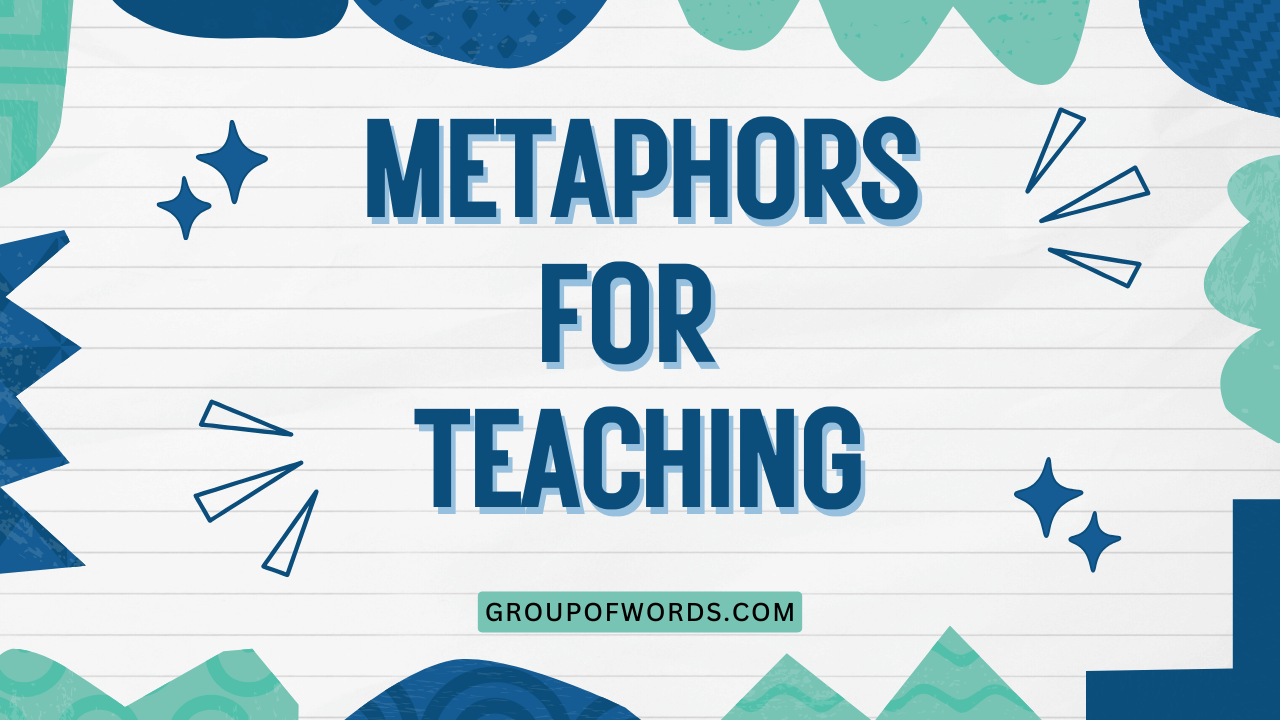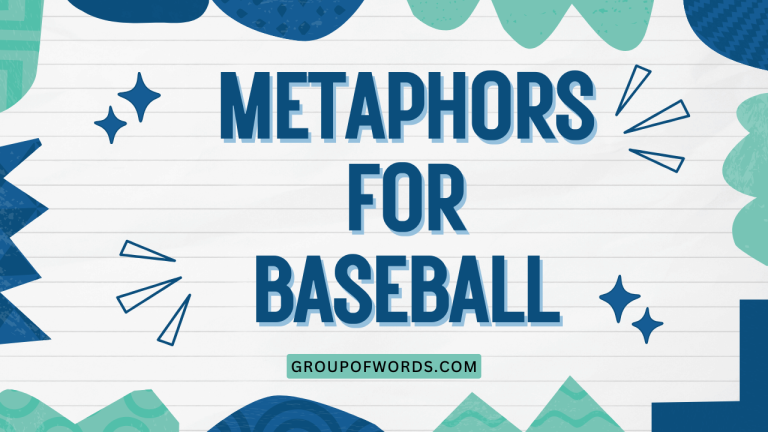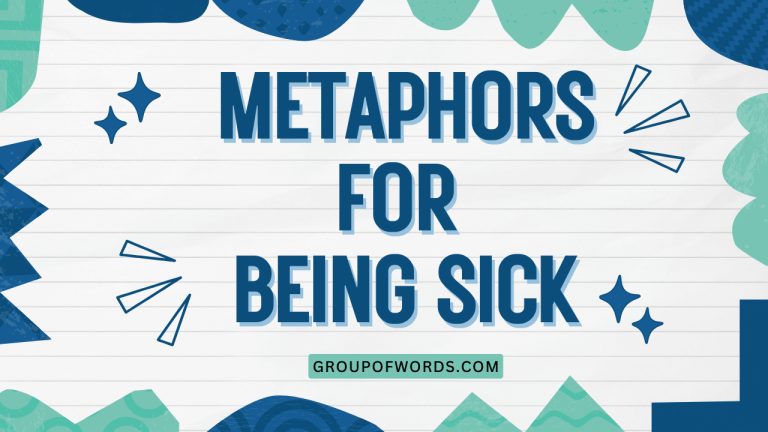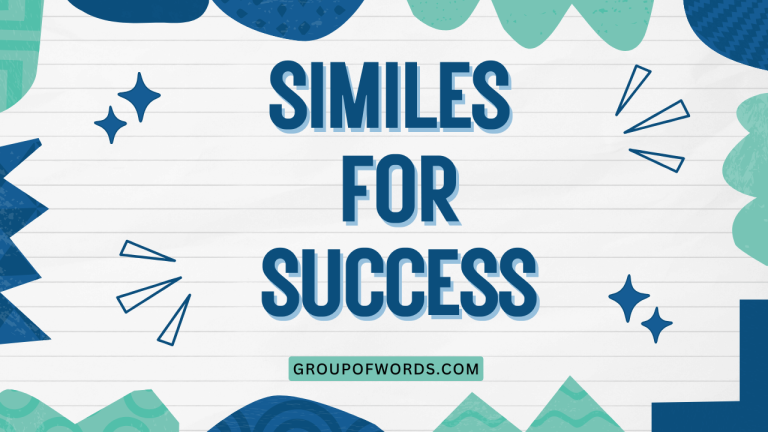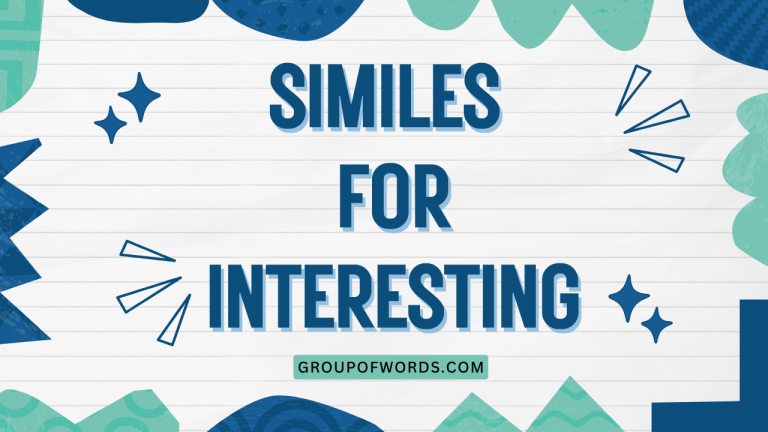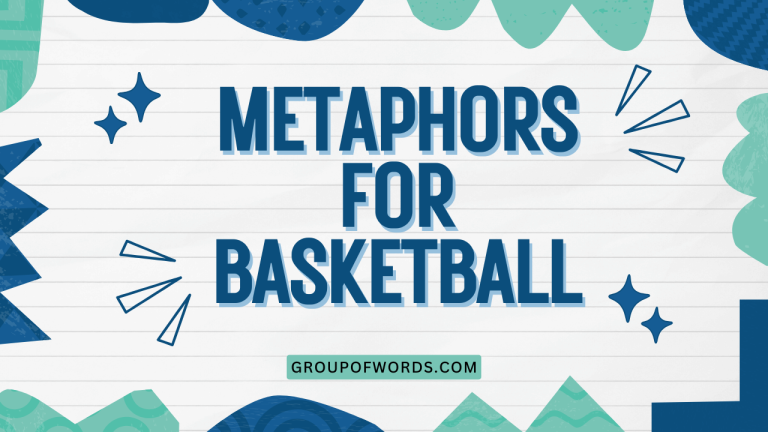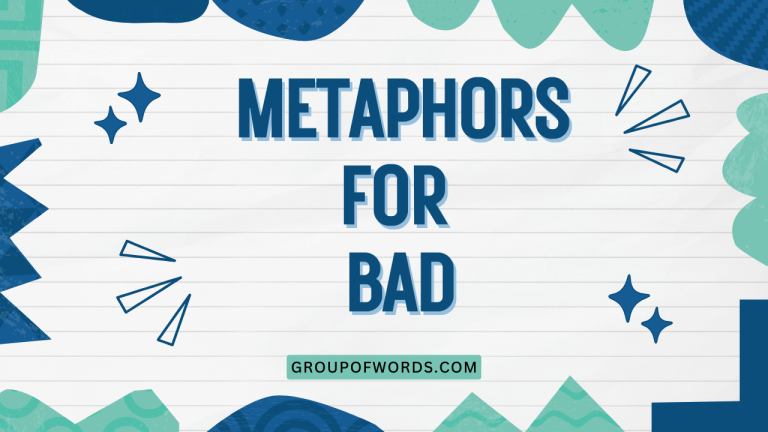Metaphors as Teaching Tools: A Comprehensive Guide
Metaphors are powerful tools that can transform abstract concepts into relatable and understandable ideas. In education, they serve as bridges connecting unfamiliar subjects to students’ existing knowledge.
Mastering the art of using metaphors effectively is crucial for educators looking to enhance their teaching methods and improve student comprehension. This article provides a comprehensive exploration of metaphors in teaching, covering their definition, structure, types, usage rules, common mistakes, and practical exercises.
It is designed for teachers, educators, curriculum developers, and anyone interested in leveraging the power of figurative language to improve learning outcomes.
Table of Contents
- Definition of Metaphors in Teaching
- Structural Breakdown of Metaphors
- Types of Metaphors Used in Teaching
- Examples of Metaphors in Teaching
- Usage Rules for Metaphors in Teaching
- Common Mistakes When Using Metaphors
- Practice Exercises
- Advanced Topics in Metaphorical Teaching
- Frequently Asked Questions
- Conclusion
Definition of Metaphors in Teaching
A metaphor is a figure of speech that directly compares two unrelated things, asserting that one thing is another, for rhetorical effect. Unlike similes, which use “like” or “as” to make comparisons, metaphors create a more direct and implicit connection. In teaching, metaphors are used to simplify complex ideas, make them more relatable, and enhance student understanding by drawing parallels between the unfamiliar and the familiar. The function of a metaphor in teaching is to illuminate a concept by transferring qualities from something well-known to something less known.
Metaphors can be classified based on their structure and function. Explicit metaphors directly state the comparison, while implicit metaphors imply the comparison without explicitly stating it. Conceptual metaphors are underlying systems of thought that shape our understanding of abstract concepts. In the context of education, metaphors can be used to explain scientific principles, historical events, literary themes, and mathematical concepts. For example, describing the human heart as a “pump” is a metaphor that helps students understand its function within the circulatory system.
Structural Breakdown of Metaphors
A metaphor consists of two main components: the tenor and the vehicle. The tenor is the subject being explained or described, while the vehicle is the thing to which the tenor is being compared. The connection between the tenor and the vehicle is the ground, which represents the shared characteristics or similarities between the two. Understanding these components is crucial for constructing effective and meaningful metaphors in teaching. Let’s break down the structure with an example.
Consider the metaphor: “The classroom is a stage.”
- Tenor: The classroom
- Vehicle: A stage
- Ground: A place where performances occur, where individuals play roles, and where there is an audience.
The effectiveness of a metaphor depends on the clarity of the ground. If the shared characteristics are not readily apparent, the metaphor may be confusing or ineffective.
Therefore, it is important to choose vehicles that are familiar to the students and that have clear and relevant connections to the tenor.
Types of Metaphors Used in Teaching
Metaphors in teaching can be categorized based on the subject matter and the specific function they serve. Here are some common types:
Conceptual Metaphors
Conceptual metaphors are pervasive and fundamental to how we understand abstract ideas. They shape our thinking and language, influencing how we approach problem-solving and decision-making.
In teaching, understanding and utilizing conceptual metaphors can provide students with a deeper and more intuitive grasp of complex concepts.
Structural Metaphors
Structural metaphors provide a framework for understanding one concept in terms of another. They often involve mapping the structure of one domain onto another, allowing students to see relationships and connections that might not otherwise be apparent.
Orientational Metaphors
Orientational metaphors are based on spatial orientations, such as up-down, in-out, front-back, etc. They help students understand abstract concepts in terms of physical space and direction.
Scientific Metaphors
Scientific metaphors are used to explain complex scientific principles and phenomena in simpler terms. They often involve comparing scientific concepts to everyday objects or experiences.
Historical Metaphors
Historical metaphors draw parallels between historical events, figures, or periods to help students understand their significance and impact. These metaphors often highlight recurring patterns or themes in history.
Literary Metaphors
Literary metaphors are used to analyze and interpret literary works. They help students understand the deeper meanings and themes conveyed through figurative language.
Examples of Metaphors in Teaching
Here are several examples of metaphors used in different subject areas, illustrating how they can enhance understanding and engagement.
Science Metaphors
Science often deals with abstract concepts that can be difficult for students to grasp. Metaphors can bridge the gap between the abstract and the concrete, making scientific principles more accessible.
The following table provides examples of metaphors used in science education.
| Concept | Metaphor | Explanation |
|---|---|---|
| The Atom | The solar system | Electrons orbit the nucleus like planets orbit the sun, illustrating the structure of the atom. |
| DNA | A blueprint | DNA contains the instructions for building and maintaining an organism, similar to how a blueprint contains instructions for constructing a building. |
| The Brain | A computer | The brain processes information, stores memories, and controls bodily functions, much like a computer processes data and executes programs. |
| The Cell Membrane | A gatekeeper | The cell membrane regulates the movement of substances in and out of the cell, similar to how a gatekeeper controls access to a building. |
| Evolution | A branching tree | Evolutionary relationships can be visualized as a branching tree, with each branch representing a different lineage and the trunk representing a common ancestor. |
| Photosynthesis | A solar panel | Plants use sunlight to convert carbon dioxide and water into glucose, similar to how solar panels convert sunlight into electricity. |
| The Immune System | An army | The immune system defends the body against pathogens, similar to how an army defends a country against invaders. |
| The Water Cycle | A circular journey | Water continuously moves through evaporation, condensation, and precipitation, completing a cycle like a journey that returns to its starting point. |
| Chemical Reactions | A recipe | Reactants combine to form products, similar to how ingredients combine to create a dish in a recipe. |
| Ecosystem | A web | Organisms within an ecosystem are interconnected and interdependent, similar to how threads in a web are connected. |
| Enzymes | A lock and key | Enzymes bind to specific substrates like a lock and key, showing the specificity in biochemical reactions. |
| Nervous System | An electrical circuit | The nervous system transmits signals throughout the body like an electrical circuit, using neurons as wires. |
| Heart | A pump | The heart pumps blood throughout the body, ensuring circulation and oxygen delivery to tissues. |
| Lungs | Bellows | The lungs inflate and deflate like bellows, facilitating the exchange of oxygen and carbon dioxide. |
| Viruses | Hijackers | Viruses invade host cells and use their machinery to replicate, like hijackers taking over a vehicle. |
| Antibiotics | Bombs | Antibiotics target and destroy bacteria, similar to how bombs destroy enemy targets. |
| Climate | A long-term average | Climate represents the average weather conditions over a long period, providing a broader perspective on atmospheric patterns. |
| Plate Tectonics | A jigsaw puzzle | The Earth’s crust is divided into plates that fit together like pieces of a jigsaw puzzle, explaining continental drift. |
| Gravity | An invisible string | Gravity pulls objects towards each other, like an invisible string connecting them. |
| Light | A wave or particle | Light exhibits properties of both waves and particles, demonstrating its dual nature. |
History Metaphors
History can be more engaging and understandable when presented through metaphors that connect past events to familiar concepts.
The table below illustrates how metaphors can be used to explain historical events.
| Historical Event | Metaphor | Explanation |
|---|---|---|
| The Cold War | A chess game | The Cold War was a strategic and ideological struggle between the US and the Soviet Union, similar to a chess game where each side sought to outmaneuver the other. |
| The French Revolution | A pressure cooker | The French Revolution was a result of mounting social and economic pressures, similar to a pressure cooker that explodes when the pressure becomes too great. |
| The Renaissance | A rebirth | The Renaissance was a period of renewed interest in classical art, literature, and philosophy, symbolizing a rebirth of culture and learning. |
| World War I | A powder keg | The complex alliances and tensions in Europe prior to World War I created a volatile situation, similar to a powder keg that could explode with a single spark. |
| The Industrial Revolution | A machine | The Industrial Revolution transformed society through technological advancements and mass production, similar to a machine that automates and accelerates processes. |
| The Roman Empire | A building | The Roman Empire was built on strong foundations but eventually crumbled due to internal and external pressures, like a building that collapses over time. |
| The American Civil Rights Movement | A marathon | The American Civil Rights Movement was a long and arduous struggle for equality, similar to a marathon that requires endurance and perseverance. |
| The Great Depression | An economic winter | The Great Depression was a period of economic hardship and decline, similar to a winter that brings cold and scarcity. |
| The Reformation | A crack in the church | The Reformation led to a split in the Catholic Church, creating new Protestant denominations, like a crack that divides a structure. |
| The Information Age | A digital ocean | The Information Age is characterized by a vast and ever-expanding amount of digital information, similar to an ocean that is vast and deep. |
| The Berlin Wall | A scar on the city | The Berlin Wall physically and symbolically divided Berlin, leaving a lasting scar on the city and its people. |
| The Silk Road | A bridge between cultures | The Silk Road facilitated the exchange of goods, ideas, and cultures between the East and West, serving as a bridge between different civilizations. |
| The Cold War | A high stakes poker game | The Cold War was a tense standoff with each side making strategic moves and bluffs, similar to a high stakes poker game. |
| The Vietnam War | A quagmire | The Vietnam War became a complex and difficult conflict to resolve, like a quagmire that sucks in those who enter it. |
| The Space Race | A sprint to the stars | The Space Race was a competition between the US and the Soviet Union to achieve milestones in space exploration, like a sprint towards a distant goal. |
| The Crusades | A clash of civilizations | The Crusades were a series of religious wars between Christians and Muslims, representing a clash of different civilizations and beliefs. |
| The Black Death | A grim reaper | The Black Death caused widespread death and devastation, like a grim reaper sweeping through the population. |
| The Enlightenment | A dawn of reason | The Enlightenment emphasized reason, individualism, and human rights, marking a dawn of new ideas and perspectives. |
| The Treaty of Versailles | A peace of paper | The Treaty of Versailles, intended to secure peace after World War I, was ultimately ineffective in preventing future conflicts, like a peace of paper that fails to hold. |
| The Watergate Scandal | A can of worms | The Watergate Scandal uncovered a series of illegal activities, revealing a complex and messy situation, like opening a can of worms. |
Literature Metaphors
Metaphors are fundamental to literature, enriching texts with layers of meaning and enhancing the reader’s experience. Using literary metaphors in teaching helps students to analyse texts effectively and appreciate the writer’s craft.
Below are some examples of how literary metaphors can be understood and explained:
| Literary Work | Metaphor | Explanation |
|---|---|---|
| Romeo and Juliet | “Juliet is the sun.” | Romeo compares Juliet to the sun, highlighting her beauty, warmth, and the central role she plays in his life. |
| The Great Gatsby | The green light | The green light symbolizes Gatsby’s unattainable dream of reuniting with Daisy, representing hope, longing, and the illusion of the American Dream. |
| Hamlet | “The world is an unweeded garden.” | Hamlet describes the world as overgrown with corruption and decay, reflecting his disillusionment and moral outrage. |
| The Odyssey | The sea | The sea represents the challenges, obstacles, and unknown dangers that Odysseus must overcome on his journey home. |
| To Kill a Mockingbird | The mockingbird | The mockingbird symbolizes innocence and vulnerability, representing characters like Tom Robinson and Boo Radley who are harmed despite their harmlessness. |
| Pride and Prejudice | The marriage market | The novel portrays society as a marriage market, where individuals are evaluated based on their social status, wealth, and prospects. |
| Moby Dick | The white whale | Moby Dick represents obsession, the unknowable, and the destructive power of nature, embodying the complex themes of the novel. |
| 1984 | Big Brother | Big Brother symbolizes the oppressive and all-seeing surveillance state, representing the loss of privacy and individual freedom. |
| Lord of the Flies | The island | The island represents human nature stripped of civilization, revealing the primal instincts and capacity for savagery within the boys. |
| A Tale of Two Cities | The knitting | Madame Defarge’s knitting symbolizes her relentless pursuit of revenge and her meticulous record of those who will be targeted. |
| Othello | The handkerchief | The handkerchief symbolizes Othello’s love and trust in Desdemona, and its loss triggers his jealousy and ultimately leads to tragedy. |
| The Rime of the Ancient Mariner | The albatross | The albatross symbolizes guilt, redemption, and the interconnectedness of all living things, embodying the mariner’s spiritual journey. |
| Frankenstein | The monster | Frankenstein’s monster symbolizes the dangers of unchecked ambition and the ethical responsibilities of scientific creation. |
| Brave New World | The soma | Soma represents the pacifying and controlling effects of technology and consumerism, masking the underlying social and emotional problems. |
| The Picture of Dorian Gray | The portrait | The portrait symbolizes Dorian Gray’s moral corruption and the consequences of pursuing eternal youth and beauty at the expense of his soul. |
| Waiting for Godot | Godot | Godot symbolizes hope, meaning, and purpose, and his perpetual absence reflects the existential themes of the play. |
| The Handmaid’s Tale | The red robes | The red robes symbolize the oppression and dehumanization of women in Gilead, representing their loss of identity and autonomy. |
| Beloved | Beloved | Beloved embodies the trauma and legacy of slavery, representing the painful memories and unresolved grief that haunt Sethe and her family. |
| The Catcher in the Rye | The rye field | The rye field symbolizes Holden Caulfield’s desire to protect innocence and prevent children from falling into the corrupt world of adulthood. |
| One Hundred Years of Solitude | The cyclical nature of time | The novel depicts the cyclical nature of time, with history repeating itself and the family’s fate predetermined by their past. |
Usage Rules for Metaphors in Teaching
Using metaphors effectively requires careful consideration to ensure clarity and relevance. Here are some key rules to follow:
- Choose Familiar Vehicles: Select vehicles that are familiar to your students to ensure they can easily grasp the connection between the tenor and the vehicle.
- Ensure Relevance: Make sure the ground (shared characteristics) between the tenor and the vehicle is clear and relevant to the concept being taught.
- Avoid Mixed Metaphors: Maintain consistency in your metaphors to avoid confusion. Mixing metaphors can create nonsensical or contradictory images.
- Be Mindful of Cultural Differences: Consider the cultural backgrounds of your students to ensure that your metaphors are appropriate and understandable.
- Use Metaphors Sparingly: While metaphors can be powerful, overuse can diminish their impact and make your teaching seem contrived.
- Explain the Metaphor: Don’t assume that students will automatically understand the connection between the tenor and the vehicle. Explicitly explain the metaphor and its relevance to the concept being taught.
- Consider the Audience: Tailor your metaphors to the age, knowledge level, and interests of your students. A metaphor that works well for one group may not be effective for another.
- Test for Understanding: Check that students have understood the metaphor correctly and can apply it to the concept being taught. Ask questions and encourage discussion to ensure comprehension.
Common Mistakes When Using Metaphors
Several common mistakes can undermine the effectiveness of metaphors in teaching. Recognizing and avoiding these errors is crucial for maximizing the benefits of metaphorical language.
The following table highlights some common mistakes and provides correct examples:
| Mistake | Incorrect Example | Correct Example | Explanation |
|---|---|---|---|
| Mixed Metaphor | “The project is a marathon and we need to nip it in the bud.” | “The project is a marathon, and we need to pace ourselves.” | Mixing “marathon” (endurance) with “nip it in the bud” (stopping something early) creates a confusing image. |
| Unclear Vehicle | “Quantum physics is like a quantum computer.” | “Quantum physics is like a complex puzzle with many interconnected pieces.” | Using an unfamiliar vehicle (quantum computer) does not clarify the tenor. A puzzle is more relatable. |
| Irrelevant Ground | “History is a river that never sleeps.” | “History is a river, constantly flowing and changing course.” | Saying a river “never sleeps” is poetic but doesn’t enhance understanding. Focusing on the flow and change is more relevant. |
| Overused Metaphor | (Repeatedly calling the brain a computer in every lesson) | (Using a variety of metaphors to describe the brain, such as a network, a library, or a command center) | Overusing a single metaphor can make it lose its impact and become cliché. |
| Culturally Insensitive Metaphor | (Using a metaphor based on a cultural reference that is unfamiliar or offensive to some students) | (Using a metaphor that is universally understood and respectful of all cultures) | Metaphors should be culturally sensitive and inclusive to avoid alienating or offending students. |
| Too Complex | “Calculus is like navigating the labyrinth of Daedalus.” | “Calculus is like climbing a staircase, each step building on the one before.” | A complex vehicle makes understanding harder. The staircase is a simpler, clearer way to express progressive understanding. |
| Misleading Metaphor | “The economy is a well-oiled machine.” (When the economy is struggling) | “The economy is a complex engine that requires careful maintenance.” | The initial metaphor is inaccurate in the given context. The revised metaphor acknowledges complexity and the need for care. |
| Lack of Explanation | (Presenting a metaphor without explaining its connection to the concept) | “The cell is like a factory, with different organelles performing specific tasks. The nucleus is the control center, and the mitochondria are the power plants.” | Without explanation, the metaphor may not be understood. The explanation makes the comparison clear. |
| Inconsistent Metaphor | “The project is a ship that needs to stay on track, but it’s also a garden that needs to be weeded.” | “The project is a ship that needs to stay on course, with each team member navigating towards the same destination.” | The original mixes ship and garden, creating a confusing image. The revised version sticks with the ship metaphor. |
| Ignoring Student Feedback | (Continuing to use a metaphor even when students express confusion or misunderstanding) | (Adjusting or replacing the metaphor based on student feedback to ensure clarity) | Being responsive to student feedback is crucial for effective teaching. |
Practice Exercises
Test your understanding of metaphors in teaching with these practice exercises.
Exercise 1: Identifying Metaphors
Identify the metaphor in each sentence and explain the tenor, vehicle, and ground.
| Question | Answer |
|---|---|
| 1. The mind is a blank canvas. | Metaphor: Mind is a blank canvas. Tenor: Mind. Vehicle: Blank canvas. Ground: Potential, openness to new experiences. |
| 2. Time is a thief. | Metaphor: Time is a thief. Tenor: Time. Vehicle: Thief. Ground: Steals away opportunities and youth. |
| 3. Life is a journey. | Metaphor: Life is a journey. Tenor: Life. Vehicle: Journey. Ground: Experiences, challenges, and progress. |
| 4. Education is the key to success. | Metaphor: Education is the key. Tenor: Education. Vehicle: Key. Ground: Unlocks opportunities and potential. |
| 5. The internet is an information superhighway. | Metaphor: The internet is an information superhighway. Tenor: The internet. Vehicle: Information superhighway. Ground: Rapid and extensive transport of information. |
| 6. A good book is a window to another world. | Metaphor: A good book is a window. Tenor: A good book. Vehicle: Window. Ground: Provides a view or access to another place or perspective. |
| 7. Love is a battlefield. | Metaphor: Love is a battlefield. Tenor: Love. Vehicle: Battlefield. Ground: Involves conflict, challenges, and struggles. |
| 8. Ideas are seeds. | Metaphor: Ideas are seeds. Tenor: Ideas. Vehicle: Seeds. Ground: Have the potential to grow, develop, and produce something new. |
| 9. Anger is a fire. | Metaphor: Anger is a fire. Tenor: Anger. Vehicle: Fire. Ground: Destructive, intense, and can spread quickly. |
| 10. Fear is a shadow. | Metaphor: Fear is a shadow. Tenor: Fear. Vehicle: Shadow. Ground: Follows you, darkens your path, and can be unsettling. |
Exercise 2: Creating Metaphors
Create a metaphor for each concept, using the provided vehicle.
| Concept | Vehicle | Metaphor |
|---|---|---|
| Friendship | A tree | Friendship is a tree, providing shelter, support, and growth. |
| Learning | A puzzle | Learning is a puzzle, where each piece of knowledge fits together to create a complete picture. |
| Hope | A light | Hope is a light, guiding us through darkness and uncertainty. |
| Challenges | Mountains | Challenges are mountains that we must climb to reach new heights. |
| Success | A garden | Success is a garden that requires care, patience, and hard work to flourish. |
| Memory | An archive | Memory is an archive, storing experiences and information for later retrieval. |
| Creativity | A spark | Creativity is a spark that ignites imagination and innovation. |
| Emotions | The sea | Emotions are like the sea, sometimes calm and peaceful, other times turbulent and stormy. |
| Time | A river | Time is a river, constantly flowing and carrying us forward. |
| Patience | A seed | Patience is a seed that, when nurtured, grows into something beautiful and rewarding. |
Exercise 3: Improving Metaphors
Identify what makes the following metaphors ineffective and rewrite them to be more clear and impactful.
| Ineffective Metaphor | Improved Metaphor | Explanation |
|---|---|---|
| The project is a clock. | The project is a complex machine with interconnected parts that must work together. | The original is too vague. The improved metaphor emphasizes the complexity and interdependence of the project’s components. |
| Life is a road that sometimes has sidewalks. | Life is a winding road with unexpected turns and detours. | The original is confusing. The improved metaphor focuses on the unpredictable nature of life’s journey. |
| Learning is like something. | Learning is like climbing a ladder, each step bringing you closer to your goals. | The original is too vague. The improved metaphor provides a clear and relatable image of progress and achievement. |
| The brain is a thing. | The brain is a vast network of interconnected pathways, constantly rewiring itself. | The original is too vague. The improved metaphor highlights the complexity and adaptability of the brain. |
| History is a book. | History is a tapestry woven with threads of different cultures, events, and perspectives. | The original is too simplistic. The improved metaphor emphasizes the rich and interconnected nature of historical narratives. |
| Friendship is a rock, but sometimes it crumbles. | Friendship is a strong foundation, but it requires constant care and communication to remain solid. | The original is contradictory. The improved metaphor focuses on the need for maintenance and effort in maintaining friendships. |
| Anger is a feeling that exists. | Anger is a volcano, erupting with destructive force if not properly managed. | The original is too vague and uninformative. The improved metaphor conveys the intensity and potential consequences of anger. |
| The internet is a place with stuff. | The internet is a vast library, containing a wealth of information and resources. | The original is too simplistic and unhelpful. The improved metaphor highlights the abundance and accessibility of information online. |
| Love is like a thing that happens. | Love is a garden that requires nurturing, patience, and dedication to blossom. | The original is too vague and unromantic. The improved metaphor emphasizes the effort and care required for love to thrive. |
| Teaching is like doing stuff in a room. | Teaching is like conducting an orchestra, guiding and inspiring students to create harmonious learning experiences. | The original is too simplistic and uninspired. The improved metaphor conveys the complexity and artistry of teaching. |
Advanced Topics in Metaphorical Teaching
For advanced learners, exploring the theoretical underpinnings of metaphors and their impact on cognition can provide deeper insights into their effectiveness. Consider researching the following topics:
- Conceptual Metaphor Theory: Explore how metaphors shape our understanding of abstract concepts and influence our thinking.
- Cognitive Linguistics: Investigate how language and thought are interconnected and how metaphors play a role in cognitive processes.
- Framing Effects: Examine how metaphors can be used to frame issues and influence perceptions and attitudes.
- The Role of Metaphors in Creativity and Innovation: Discover how metaphors can stimulate creative thinking and generate new ideas.
- Cross-Cultural Metaphors: Study how metaphors vary across cultures and how cultural differences can impact their interpretation and effectiveness.
Frequently Asked Questions
Here are some frequently asked questions about using metaphors in teaching.
- What is the difference between a metaphor and a simile?
A metaphor directly compares two unlike things by stating that one thing is another, while a simile uses “like” or “as” to make a comparison. For example, “The mind is a sponge” (metaphor) versus “The mind is like a sponge” (simile).
- How can I make sure my metaphors are effective?
Choose familiar vehicles, ensure relevance between the tenor and the vehicle, explain the metaphor clearly, and be mindful of cultural differences.
- What are some common pitfalls to avoid when using metaphors?
Avoid mixed metaphors, unclear vehicles, irrelevant grounds, overused metaphors, and culturally insensitive metaphors.
- Can metaphors be used in all subjects?
Yes, metaphors can be used in any subject to simplify complex ideas and make them more relatable. The key is to choose appropriate and relevant metaphors for each subject.
- How can I encourage students to use metaphors in their own writing and thinking?
Provide examples of effective metaphors, encourage students to identify metaphors in texts they read, and give them opportunities to create their own metaphors in writing and discussions.
- What if students don’t understand my metaphor?
If students don’t understand your metaphor, try explaining it in more detail, providing additional examples, or choosing a different metaphor that may be more relatable to them. Ask for feedback to gauge understanding.
- How do I choose the right metaphor for a particular concept?
Consider the key characteristics of the concept you want to explain and think about objects, ideas, or experiences that share those characteristics. Choose a vehicle that is familiar to your students and that clearly illustrates the connection to the tenor.
- Are there any resources that can help me find good metaphors for teaching?
Yes, many online resources and books provide examples of metaphors used in different subject areas. You can also brainstorm with colleagues or search for metaphors related to specific concepts online.
Conclusion
Metaphors are powerful tools for enhancing understanding and engagement in teaching. By carefully selecting and explaining metaphors, educators can bridge the gap between abstract concepts and students’ existing knowledge.
Mastering the art of metaphorical teaching requires practice, reflection, and a willingness to adapt your approach based on student feedback. By incorporating metaphors into your teaching strategies, you can create a more meaningful and memorable learning experience for your students.
Remember to choose familiar and relevant vehicles, avoid common mistakes, and always explain the connection between the tenor and the vehicle to ensure clarity and comprehension.
